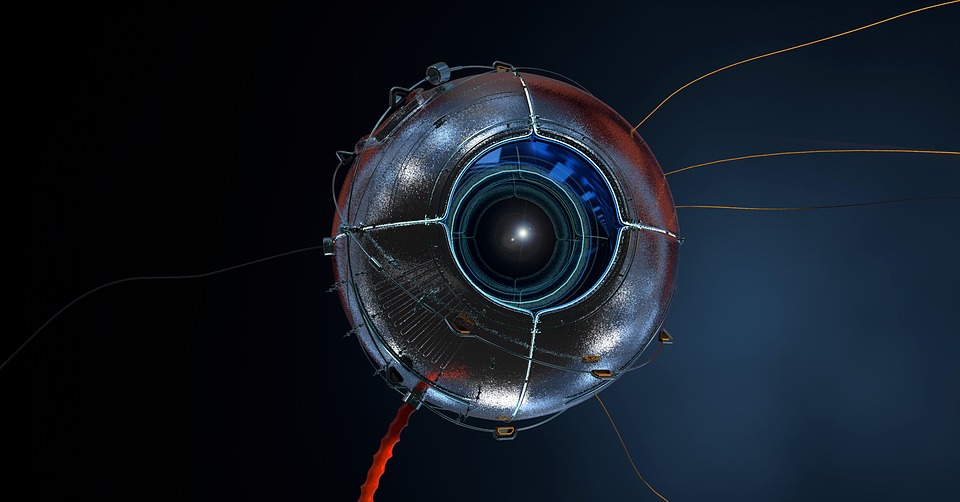DE FAAKTO INTELLIGENCE RESEARCH OBSERVATORY
SITUATION-CREEPING RUSSIAN SATELLITE-INTELLIGENCE NOTES
METHODOLOGY-OSINT research
BACKGROUND & ANALYSIS
Russian military satellite Kosmos 2501, AKA “the Luch or the Olymp” is a secretive space vehicle launched by Russia in 2014. Most commonly designated the Luch satellite; its role and mission is not well understood by the open source intelligence community. The satellite is positioned 22,000 miles above the surface of the earth, in geostationary orbit. Initially the satellite moved between Russian satellites, not an unusual occurrence, considering rendezvous & proximity operations. During these operations; maintenance, repair, refueling & upgrades are carried out. Initially there was no cause for alarm, until the Russian satellite started re-positioning in close proximity of other national & corporate satellites. The Luch has stopped briefly in 17 different longitudes in the last five years, and has spent significant time around satellites operated by Intelsat, a communications provider based jointly in Luxembourg and Washington DC. Intelsat operates satellites that provide communications services to both, the private sector & military-government grade operations. Similar lingering operations by the Luch satellite has been observed near the French-Italian satellite Athena-Fidus by the French Armed Services. The Luch loiters dangerously close to other satellites in orbit and moves irresponsibly around space with no regard for traffic control. Russian Luch satellite operators do not respond to inquires from other satellite consortium’s. While the Russian satellite’s mission is not clear, the chief concern is that, the Luch can intercept & capture the intelligence signals of other satellite operators. Alternatively proximity operations could lead to satellites that disguise weapons, damage, hack or destroy an adversary’s satellite. To counter the suspected spy satellite, there is little that can be done beyond data encryption. Inspecting another nation’s satellite is generally, an accepted practice, and other nations conduct similar operations. The United States operates the Geosynchronous Space Situational Awareness Program, where observational satellites operating in geostationary orbit can fly closer to unknown objects to provide a closer look. China operates similar inspection satellites that appear to only observe their own satellites. With the inescapable, unlimited militarization of space on the horizon, it is probable that most space forces will deploy satellites for both offensive and defensive capability.

What Do We Know About the Russian Luch Satellite?
- The Luch is also known as the Olymp satellite
- The Luch is designated Russian military satellite Kosmos 2501
- The Kosmos 2501 was launched on September 28, 2014 (Vice, 2015)
Not much is known about the Luch satellite
- The Russian government has released little information about the secretive space vehicle
- Attempts by commercial satellite companies to contact the Russians about the satellite have reportedly proven fruitless (C4ISRNET, 2019)
- According to the aerospace security project at the Center for Strategic and International Studies, the United States’ understanding of Luch is limited due to the lack of public information about the satellite (C4ISRNET, 2019)
What Does The Luch Satellite Do?
- The Luch satellite is positioned 22,000 miles above the surface of the earth (C4ISRNET, 2019)
- Launched in September 2014, Luch spent its first months in geostationary orbit flitting between Russian spacecraft-this was mildly puzzling to satellite trackers, but not an immediate cause for alarm (Vice, 2015)
- The Luch satellite sidles up close to other (non Russian) satellites and stays there for a while, and then moves along to other satellites
- According to the Secure World Foundation’s Global Counter Space Capabilities report, Luch has stopped briefly in 17 different longitudes in the last five years (C4ISRNET, 2019)
- The Luch has spent significant time around satellites operated by Intelsat, a communications provider based jointly in Luxembourg and Washington DC (Vice, 2015)
- Theoretically the Luch satellite is able to intercept the ground signals directed at the targeted satellite-it’s not clear from the limited amount of publicly available information if this is happening
- This suggests that it’s some sort of inspection, data or electronic intelligence collection apparatus (C4ISRNET, 2019)
- The high level of secrecy may be because Russian military forces are interested in communications, communications interception and communication jamming (Sydney Morning Herald, 2015)
Do Other Nations Operate Similar Satellite Inspection Vehicles?
- Yes- Russia is by no means the only nation that is testing the orbital waters with these technologies
- China and the United States have conducted similar operations (Vice, 2015)
- The United States of America-Operates-The Geosynchronous Space Situational Awareness Program, where observational satellites operating in geostationary orbit can fly closer to unknown objects to provide a closer look
- China-Operates inspection satellites-The Chinese inspection satellites appear to only observe their own satellites (C4ISRNET, 2019)
Why Do Luch Satellite Activities Matter?
- Russia may be experimenting with rendezvous and proximity operations, or at the very least demonstrating its capabilities (Vice, 2015)
What are Rendezvous & Proximity Operations?
- Rendezvous & Proximity Operations are Orbital manoeuvres that place and maintain spacecraft in the vicinity of another craft or space object
- A Process wherein two space objects (artificial or natural body) are intentionally brought close together
- Servicing Operation(s)-inspection, capture, docking, berthing, relocation, refueling, life extension, combined stack control, repair, upgrade, assembly, undock, unberth, release, and departure (Politico, 2018)
- Rendezvous & proximity operations activities could, theoretically, lead to satellites that are able to approach other spacecraft to damage, hack, or destroy them (Vice, 2015)
- Unannounced flight changes can be dangerous, as they disrupt the working model of restricting satellites to specific orbital pathways (Vice, 2015)
- Intelsat General, the government services arm of satellite operator Intelsat of Luxembourg and McLean, Virginia, has described the Luch satellite’s movements as “irresponsible” (Spacenews.com, 2015)
- The French Minister of the Armed Services made similar statements about the Russian satellite’s behaviour as it related to the French-Italian satellite Athena-Fidus (CSIS.org, 2019)
It is difficult to police this type of space militarization
- Rendezvous & Proximity Operations manoeuvres and even anti-satellite weapons can be disguised under peaceful objectives, such as repairing satellites instead of tampering with them (Vice, 2015)
- One of the biggest concerns for operators who see Luch approaching their satellite is the possibility that Luch will be able to steal their transmissions
- Another satellite operating close enough to the intended recipient could pick up that signal (C4ISRNET, 2019)
- While the Russian satellite’s mission is not clear, its manoeuvres have been the subject of classified meetings within the Defense Department and captured the attention of lawmakers on Capitol Hill (Spacenews.com, 2015)
How is the Luch Satellite Countered?
- Inspecting an adversaries satellite is not offensive or inherently destabilizing (C4ISRNET, 2019)
- There are no widely accepted norms of behavior that apply to this situation and there’s no legal framework banning this sort of activity
- It is not clear whether Luch is actually intercepting data, or whether it is simply wreaking havoc
- To date observers have seen no offensive capability
- Beyond encryption, there’s little that companies can do to protect their satellites or data (C4ISRNET, 2019)

Resources
Why Is a Russian Military Satellite Creeping on Foreign Comm Satellites? VICE (2015) https://www.vice.com/en_us/article/4xagyq/why-is-a-russian-military-satellite-creeping-on-foreign-comm-satellites
Russian satellite creeps up to Intelsat satellite – again-C4ISRNET (2019) https://www.c4isrnet.com/battlefield-tech/2019/09/03/russian-satellite-creeps-up-to-intelsat-satellite-again/
Guiding Principles for Commercial Rendezvous and Proximity Operations (RPO) and On-Orbit Servicing (OOS)-Politico (2018) https://www.politico.com/f/?id=00000166-f419-d3ac-a1fe-f7bfe45e0001
Russian Luch Satellite Relocates — Next to Another Intelsat Craft-Spacenews.com (2015) https://spacenews.com/russian-luch-satellite-relocates-next-to-another-intelsat-craft/
Unusual Behaviour in GEO: Olymp-K – CSIS.org (2019) https://aerospace.csis.org/data/unusual-behavior-in-geo-olymp-k/
Space Threat Assessment 2019-CSIS.org (2019) https://aerospace.csis.org/wp-content/uploads/2019/04/SpaceThreatAssessment2019-compressed.pdf#page=22
Luch/Olymp rogue Russian satellite symbolises new worries about space peace-The Sydney Morning Herald (2015) https://www.smh.com.au/technology/lucholymp-rogue-russian-satellite-symbolises-new-worries-about-space-peace-20151123-gl59of.html






